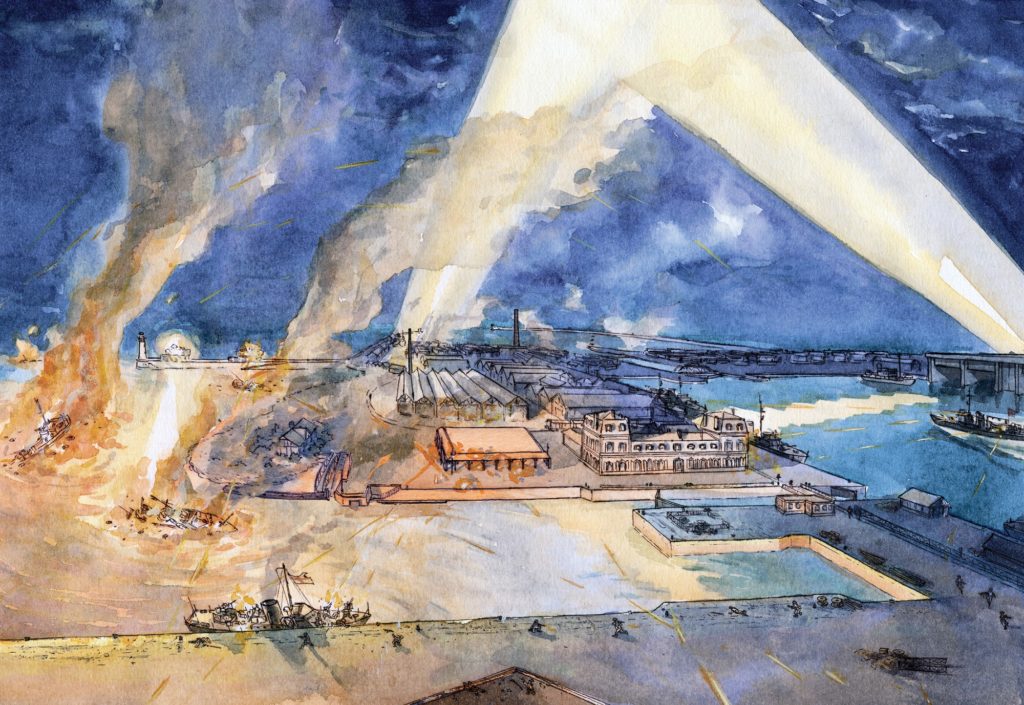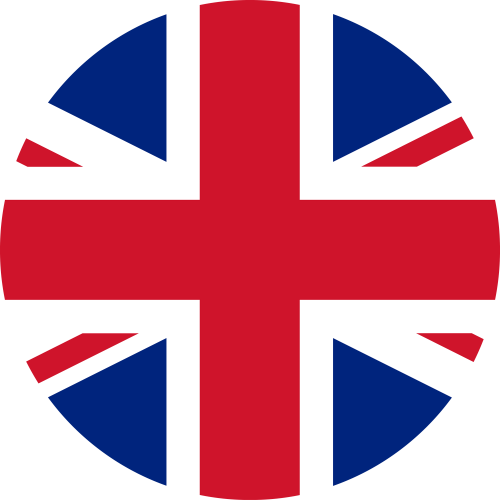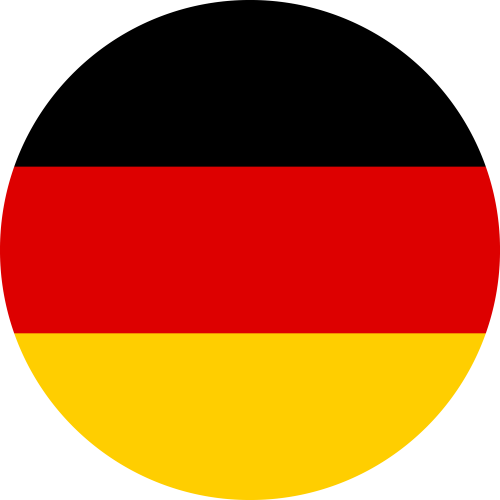Sur les lieux de l’opération Chariot

 4 – Le théâtre des opérations – 28 mars 1942 – 1 h 50 (heure anglaise)
4 – Le théâtre des opérations – 28 mars 1942 – 1 h 50 (heure anglaise)
Ce 28 mars 1942, l’écluse n’a pas encore été fortifiée par l’armée allemande. Les quais de l’entrée Est sont dégagés alors que le plateau du Vieux Saint-Nazaire est occupé par un labyrinthe d’entrepôts. Avec les abords de la forme-écluse, ils sont le théâtre d’intenses combats jusqu’à l’aube. Du côté des combattants britanniques comme allemands, les morts et les blessés sont nombreux.
« Peu après 2 heures du matin j’ai été averti par téléphone que les Anglais avaient débarqué. Je ne l’ai pas cru et j’ai dit au standardiste : Vous êtes ivre ! Allez vous coucher ! »
Capitaine de corvette Herbert Sohler, commandant allemand de la 7e flottille de sous-marins basée à Saint-Nazaire au moment du raid
Début 1941, la Marine allemande lance la construction de la base sous-marine pour accueillir, ravitailler et réparer ses sous-marins. En mars 1942, neuf alvéoles sont fonctionnelles. Cinq autres sont en construction.
Les bombardements aériens alliés poussent également à créer un accès fortifié dans l’entrée Est pour protéger les submersibles durant l’éclusage.
Pour en savoir plus
Découvrez l’histoire du HMS Campbeltown, le navire sacrifié qui éperonna la porte de la forme-écluse Joubert.
 4 – The Theatre of Operations – 28 March 1942 at 0150 hours (British time)
4 – The Theatre of Operations – 28 March 1942 at 0150 hours (British time)
On 28 March 1942, the lock had not yet been fortified by the German army. The quays of the East entrance were unobstructed whereas the Old Town dockyard was covered with a labyrinth of sheds. They, and the area around the dry dock, were the theatre of intense fighting until dawn, leaving many dead and wounded on both British and German sides.
“Just after two in the morning I was informed by telephone that the British had landed. I didn’t believe it and I told the operator: “You must be drunk! Please hang up!”
Lieutenant Commander Herbert Sohler, commander of Germany’s 7th U-boat flotilla, which was based in St. Nazaire at the time of the raid.
In early 1941, the Germany Navy had begun building a submarine base to house, resupply and repair its U-boats. By March 1942, nine submarine pens were operational and five others in construction.
The Germans also later built a fortified lock at the East entrance to protect submarines entering and exiting the dock from allied air raids.
 Am Schauplatz der Ereignisse – 28. März 1942 – 1 Uhr 50 (englische Uhrzeit)
Am Schauplatz der Ereignisse – 28. März 1942 – 1 Uhr 50 (englische Uhrzeit)
An diesem 28. März 1942 ist die Schleuse noch unbefestigt. Über die Kaimauern der östlichen Hafeneinfahrt hat man freie Sicht, doch der Platz zwischen Hafen und Loiremündung ist ein wahres Labyrinth von Lagerhäusern. Hier und rings um das Normandie-Dock finden bis zum Morgengrauen erbitterte Kämpfe statt. Briten und Deutsche haben zahlreiche Tote und Verwundete zu beklagen.
« Kurz nach 2 Uhr morgens wurde ich telefonisch davon informiert, dass die Engländer gelandet seien. Ich glaubte es nicht und sagte zum Telefonisten: Sie sind wohl betrunken, legen Sie sich ins Bett! »
Korvettenkapitän Herbert Sohler, damaliger Befehlshaber der in Saint-Nazaire stationierten deutschen 7. U-Bootflotille.
Anfang 1941 beginnt die Kriegsmarine mit dem Bau des U-Bootbunkers, ein Stützpunkt, in dem die U-Boote Nachschub an Bord nehmen und repariert werden. Im März 1942 sind 9 Boxen funktionsfähig, fünf weitere sind im Bau begriffen.
Angesichts der alliierten Luftangriffe wird es nötig, die östliche Schleuse zu befestigen, um die U-Boote während der Schleusung zu schützen.